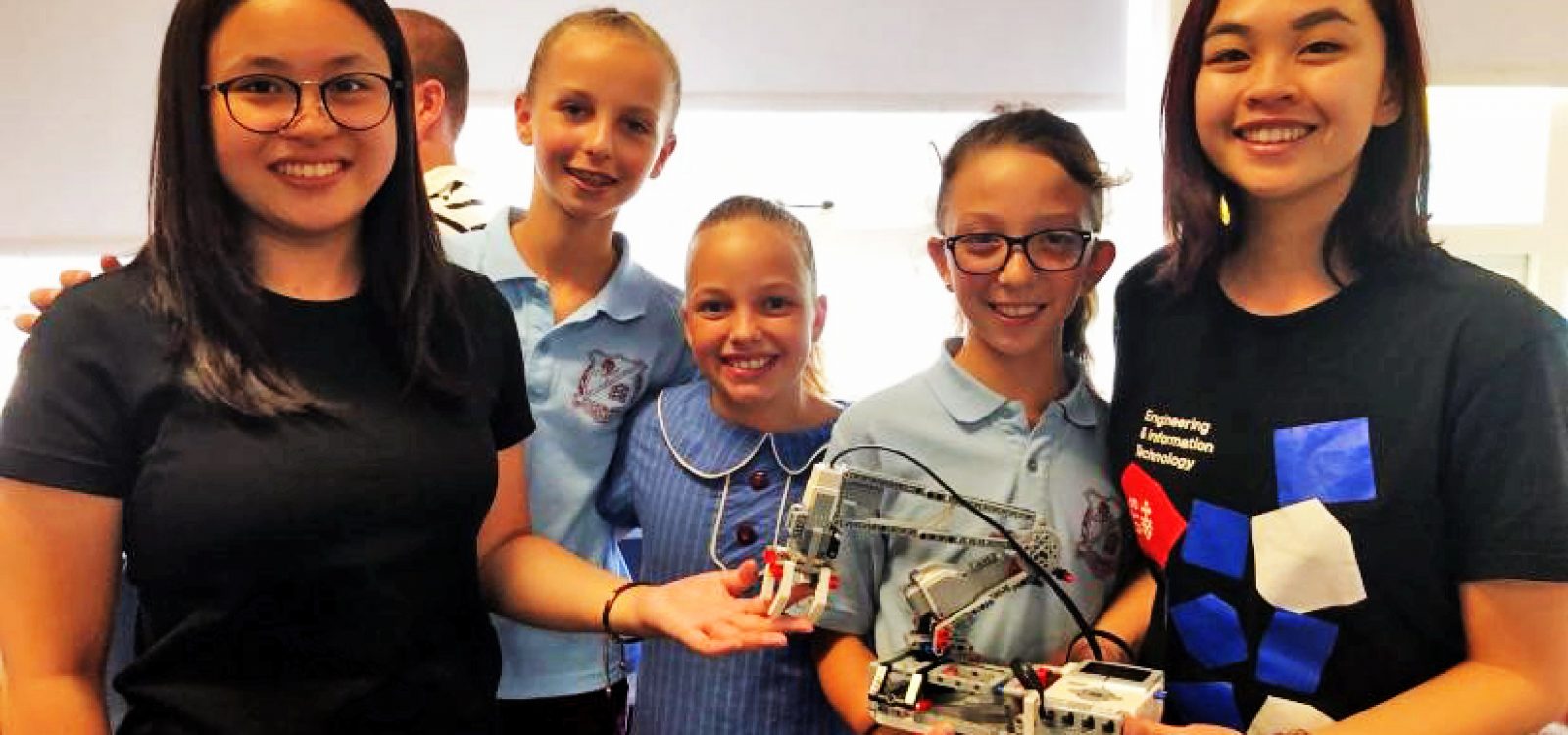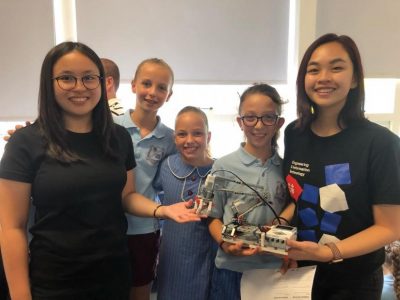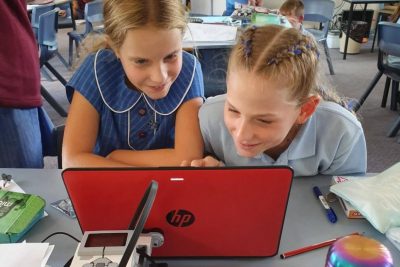
Building STEM aspiration in primary school girls
A pilot STEM program for primary school kids is aiming to build student, teacher and parent confidence and interest in STEM, and to shift perceptions of what STEM is, through real-world projects and role-modelling.
This article was originally published here on the UTS Centre for Social Justice and Inclusion’s website on 17 June 2019.
According to the Australasian Journal of Information Systems, by the age of five, girls already think that boys are better at maths.
The Women in Engineering and IT (WiEIT) program team at the University of Technology Sydney (UTS) takes part in school outreach to build STEM aspiration, particularly in young women. It “seeks to foster a network of passionate individuals who are actively involved in the development of our next generation of young engineering and IT professionals.”
Up until recently, they only ran outreach programs in high schools. That changed in 2018 when they decided to run a pilot STEM program for primary school kids.
“Research suggests that programs to increase girls’ interest in STEM are more effective at the primary level before girls are pressured to conform to gender stereotypes in order to belong,” said WiEIT Program Coordinator Lauren Black.
WiEIT received a Social Impact Grant from the UTS Centre for Social Justice and Inclusion, seed funding from the NSW Office for Women, as well as financial backing from their own faculty, to run the pilot.

“Existing STEM school outreach programs focus on high school girls, and the few initiatives for primary schools do not address the key intersecting influences of families and teachers,” said Lauren.
“While effective in inspiring students in the short-term, long term self-efficacy in girls is undermined by pervasive stereotypes and social norms. Our pilot program focuses on the impact of increasing teacher and parent self-efficacy in STEM and the influence that has on girls’ own self efficacy.”
The in-curriculum, eight week program gives Year 5 and 6 students the opportunity to solve real-world problems using technology and prototype solutions with STEM resources, including the BBC Microbit and Lego Mindstorm Robotics.
UTS students and industry professionals visit the schools once a week to run two-hour sessions where they mentor not only the students, but the teachers and some parents as well.
The Actuaries Institute examined Gender Diversity in STEM at a recent International Women’s Day event. Experts identified causes and implications of the low uptake in Australia, and said addressing parent and teacher unconscious bias toward STEM careers being more suitable for boys, and helping students struggling with maths early on, are critical steps to improvement. Read the Gender Diversity in STEM event report. |
“One of the key outcomes for teachers has been the high level of engagement in the classroom, particularly for students who are otherwise disengaged. Teachers have also learnt how to integrate STEM into the curriculum and how to relate STEM activities to real world problems,” Lauren said.
Families were also encouraged to converse with their children about their STEM projects at home.

“The program directly impacts the attitude of students, so they can drive their own learning in STEM. However, for sustainable, long term impact, we know that the attitudes of teachers and parents towards STEM needed to be shifted,” Lauren said.
“When girls go to high school and choose their Year 9 electives, we need parents to be reinforcing messages that STEM skills are valuable, if not imperative for their daughter’s future.”
Measuring the impact
On top of designing and implementing the program, WiEIT contracted an experienced researcher to undertake a literature review and create evaluation tools to measure the impact of the pilot.
“We were fortunate enough to partner with Dr Jenine Beekhuyzen, Founder of the Tech Girls Movement, who analysed over 300 articles and produced a literature review which guided our program design,” Lauren said.
The purpose of the literature review was to better understand how to engage girls in STEM, influences on career choices (including parents), existing interventions and evaluation tools to measure them.
Dr Beekhuyzen is also helping to analyse the data collected from the programs evaluation tools, which includes surveys, focus groups, interviews and observation, which will then be turned into a research report.
“We are hoping this will help us attract more funding from government and industry to scale up the program so that we can continue in the five pilot schools and expand to 20 new schools,” Lauren said.
“We already have 16 expressions of interest from teachers just from word of mouth. We have also started to collaborate with other universities to deliver the program so that we can meet the demand from schools in metropolitan and regional NSW.”
Confidence code
While this has been a valuable learning experience for the WiEIT team, for Lauren, the most rewarding thing to come out of this project is seeing how excited and inspired the kids taking part in the program are.
“Those moments when the girls realise their own capability is really rewarding. They may have been hesitant to even take the Microbit out of the packaging at first, but three weeks later they are up in front of the class presenting a working prototype that they have designed and coded with their friends,” Lauren said.
“It is those fleeting moments when girls say, ‘Can I take the Microbit home?’, or ‘I didn’t really think coding was for me but it was actually really fun.’”
No matter what the future holds for the program, Lauren and her team are confident they can make a real change, and are grateful for the support that allows them to do what they do.
The Actuaries Institute’s High School Program aims to nurture the interest of mathematically gifted high school students so they are able to consider an actuarial career at an early stage. |
CPD: Actuaries Institute Members can claim two CPD points for every hour of reading articles on Actuaries Digital.






